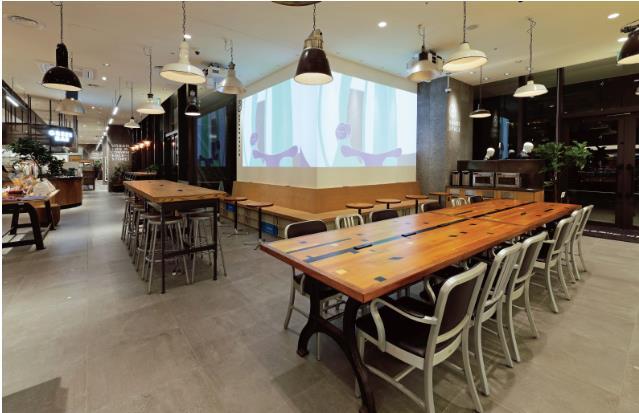डिसेंबर . 10, 2024 23:15 Back to list
Shop Building Strategies for Successful Retail Spaces and Enhanced Customer Experience
Shop Construction A Blueprint for Success
The retail landscape is ever-evolving, and the construction of shops plays a critical role in shaping the customer experience. A successful shop construction project goes beyond merely building walls and laying down floors; it encompasses a comprehensive understanding of design, function, and brand identity. This article delves into the key elements involved in shop construction, offering insights into how retailers can create an inviting and effective shopping environment.
Understanding the Purpose
Before any physical construction begins, it is essential to identify the shop's purpose. Is it a boutique aiming to create an intimate shopping experience, or a large-scale department store focused on efficiency and volume? The answers to these questions will guide many decisions throughout the construction process. For instance, a boutique may prioritize aesthetics and customer interaction spaces, while a larger store might focus on easy navigation and product accessibility.
Design and Layout
The design of a shop is paramount in influencing customer behavior. An effective layout not only facilitates the flow of traffic but also enhances the overall shopping experience. Different design paradigms exist, such as grid, racetrack, and free-form layouts, each catering to different retail needs. A grid layout, often used in grocery stores, maximizes product exposure but can become monotonous. Conversely, a racetrack layout guides customers around the store in a more engaging manner, making it suitable for fashion retail.
Elements such as lighting, color, and signage also play a crucial role in design. Proper lighting can highlight products, create mood, and influence purchasing decisions. Colors evoke emotions; a vibrant palette may energize customers, while softer tones can provide a calming environment. Additionally, clear signage is essential for navigation, enabling customers to find what they need quickly, which directly impacts their satisfaction.
Materials and Sustainability
The choice of materials in shop construction goes beyond aesthetics; it encompasses durability, maintenance, and sustainability. Retailers are increasingly leaning towards eco-friendly materials, which not only appeal to environmentally conscious consumers but also decrease long-term operational costs. Sustainable building materials, such as reclaimed wood and recycled metals, can enhance a shop's image while reducing carbon footprints.
shop construction

Moreover, incorporating energy-efficient systems—like LED lighting and energy-efficient HVAC units—can lead to significant savings on utility bills and reduce environmental impact. Building certifications, such as LEED (Leadership in Energy and Environmental Design), highlight a commitment to sustainability, contributing positively to a brand's reputation.
Technology Integration
In today’s digital age, integrating technology into shop construction is vital. Modern consumers expect a seamless blend of physical and digital shopping experiences. The incorporation of interactive displays, mobile payment options, and in-store navigation apps can significantly enhance customer engagement. Additionally, digital signage can be used for promotions and advertisements, making it easy to update content without the cost of printing new materials.
Collaboration and Project Management
Shop construction requires effective collaboration between various stakeholders, including architects, builders, and retail managers. Open lines of communication are essential to ensure that everyone understands the vision and goals of the project. Utilizing project management software can help streamline the construction process, tracking progress, and handling budgets efficiently.
Hiring a contractor experienced in retail construction can also make a world of difference. They understand the specific challenges shops face, from zoning regulations to pedestrian access. Their expertise can help navigate potential pitfalls, ensuring that the project stays on schedule and within budget.
Conclusion
In conclusion, shop construction is a multifaceted process that requires careful planning and execution. From understanding the purpose of the shop to creating an optimal design and integrating technology, each element plays a vital role in crafting a successful retail environment. As the retail landscape continues to change, those who invest in well-thought-out shop construction will stand out, drawing customers in and ensuring a compelling shopping experience. Ultimately, a well-constructed shop reflects the brand’s identity and values, laying the foundation for enduring customer relationships and business success.
-
Jeanswest Design: Stylish Jeans & Apparel for Every Wardrobe.
NewsSep.01,2025
-
Heavy Duty Wood Rack with Light for Store Trousers & Sport
NewsAug.31,2025
-
Ins Style Makeup Brush Storage Tube for Dorm & Dressing Table Desktop
NewsAug.30,2025
-
Heavy Duty Wooden Clothes Rack with Light for Trousers Display
NewsAug.29,2025
-
Discover Your Perfect Retail Shop: Best Deals & Selection
NewsAug.28,2025
-
Optimize Retail Displays With Advanced Rack Fitting For Shop
NewsAug.22,2025


















































































































